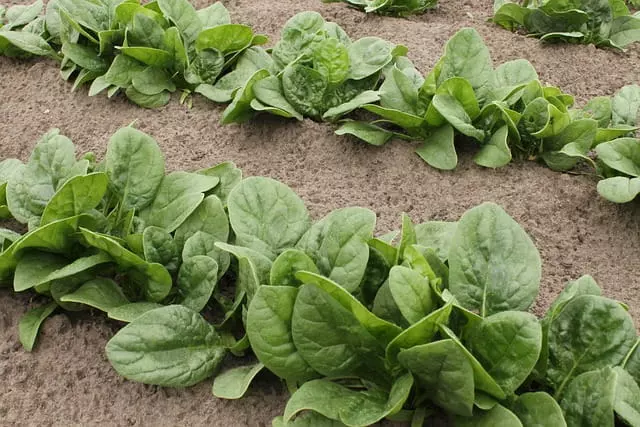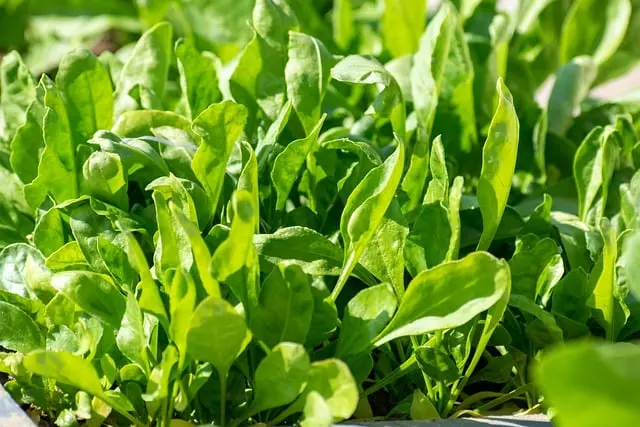The only way to get excellent quality spinach is through soil nutrients during growth. You must fertilize the soil properly to encourage spinach growth and development if you want quality spinach. It is essential to prepare the soil before planting spinach. In this article, I will explain everything about fertilizer for spinach.
Spinach grows in nutritious, well-drained soil. Keep the soil moist but not waterlogged. Spinach will grow and develop appropriately in soils with high nitrogen content. Continue reading to learn more about fertilizer for spinach.
Table of Contents
What Kind of Fertilizer for Spinach
Spinach grows well in nutritious soils with a pH between 6 and 7.2. It is vital to measure the pH of the soil for spinach to develop properly and absorb the necessary nutrients correctly.
A few weeks before planting spinach, prepare the soil by adding compost and a balanced fertilizer NPK 10-10-10 or a similar mixture. If you don’t know, “NPK” stands for Nitrogen, Phosphorus, and Potassium. Therefore, a fertilizer NPK 10-10-10 means the fertilizer has 10% nitrogen, 10% phosphorus, and 10% potassium. The remaining components are other nutrients and minerals.
Spinach needs a lot of nitrogen and calcium to develop properly. Apply an NPK 21-0-0 or similar fertilizer 4 weeks after planting spinach. You can also add ground eggshells to provide the necessary calcium to the spinach plant.

Best Fertilizer for Spinach
As mentioned above, preparing the soil before planting spinach is best. Use compost and a 10-10-10 NPK fertilizer. Preparing the soil a few weeks before ensures the correct distribution of nutrients.
Within 4 weeks of transplanting spinach, add high nitrogen fertilizer. The University of Utah recommends using a 21-0-0 NPK fertilizer. If you can’t get a fertilizer with these characteristics, look for a similar fertilizer, such as 15-0-0.
Preparing the soil before cultivation and measuring the soil pH will ensure that your spinach plants grow healthy and strong.
- The Ammonium sulfate supplement provides Nitrogen for a dark green color and rapid growth of plants.
- Great for Blueberries but can also be used on lawns, trees, shrubs, flowers and vegetables.
- Adds Sulfur to acidify high alkaline soils and soils with higher pH levels.
Homemade Fertilizer for Spinach
You can easily make homemade compost. Coffee grounds are high in nitrogen and will not change the pH of the soil, according to the University of Oregon. Adding coffee grounds to spinach will provide a good amount of nitrogen.
Also, you can use compost and manure to fertilize spinach. I suggest reading our article about how to make a worm composting bin to have free compost forever. To provide calcium naturally to the spinach plant, use eggshells.
So, to make homemade spinach fertilizer, combine compost, manure, coffee grounds, and eggshells. This way, you will have a 100% organic fertilizer.
When To Fertilize Spinach
It is best to fertilize the soil where you will plant the spinach a few weeks before. This will give the soil time for the nutrients to dissolve and mix properly. Then during the spinach growing season, fertilize every three weeks. Use a fertilizer with a high nitrogen content for spinach to develop correctly.

How To Fertilize Spinach
It is best to use a slow-dissolving NPK 21-0-0 granular fertilizer to fertilize spinach. Spread the fertilizer evenly around the plants, and avoid letting the fertilizer touch the spinach leaves. Then water to encourage the fertilizer to dissolve. As usual, I always recommend reading the manufacturer’s instructions and following them for the correct dosage.
I recommend constantly fertilizing in the afternoon. This way, when watering, the water will not evaporate quickly and will allow the fertilizer to dissolve properly. Repeat the fertilizing process every three weeks or as the fertilizer manufacturer recommends. Remember to add eggshells to provide calcium to the spinach.

Final Conclusions
Fertilizing spinach is very important for getting large, healthy plants. Not fertilizing spinach will result in small, weak-leafed plants. To obtain an abundant spinach harvest, I recommend you to read our article on how to harvest spinach without killing the plant.


